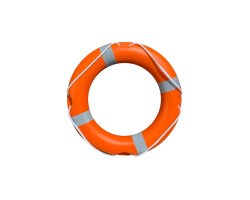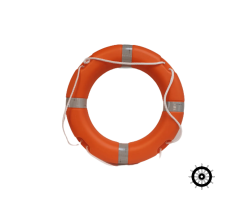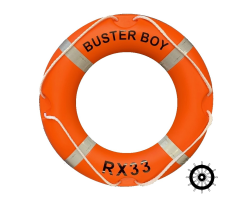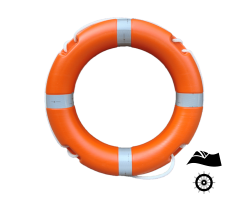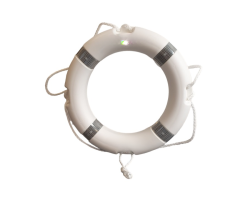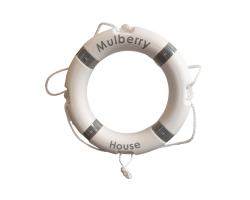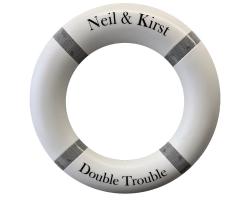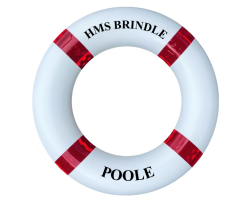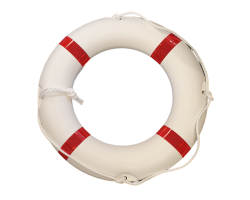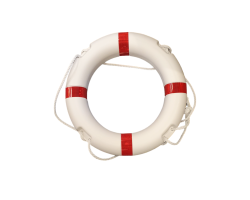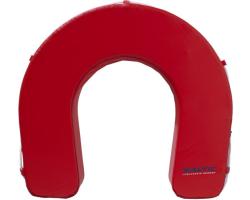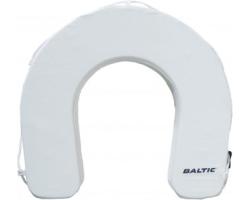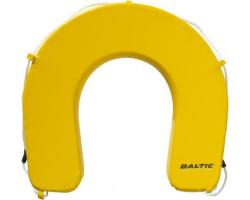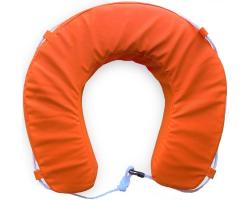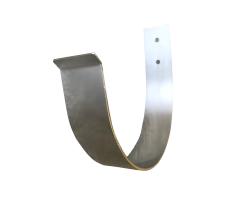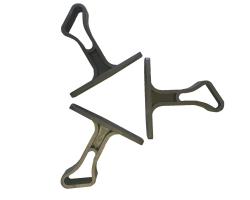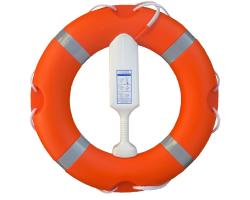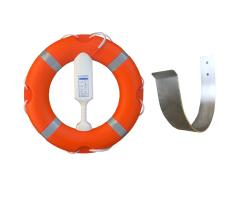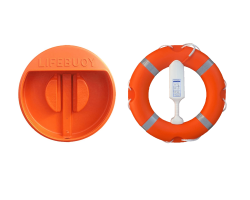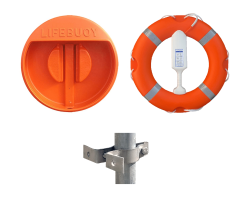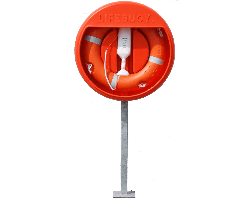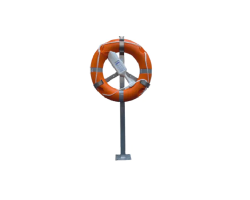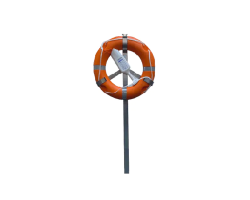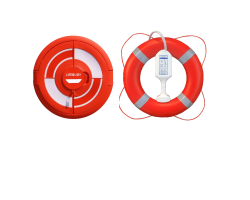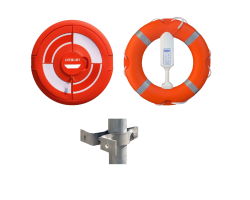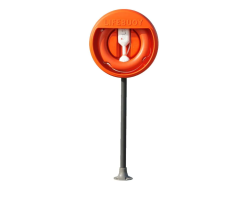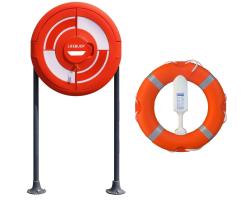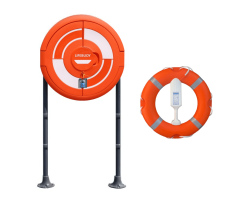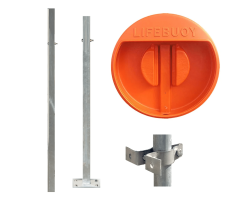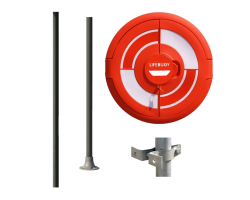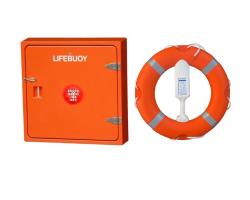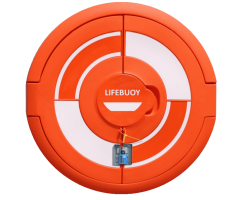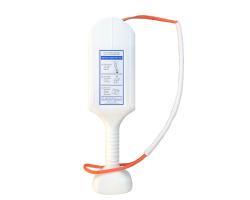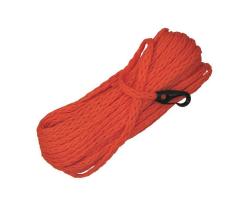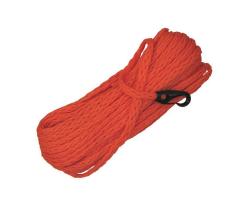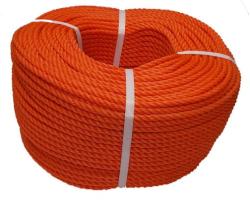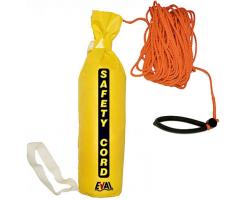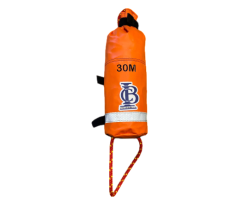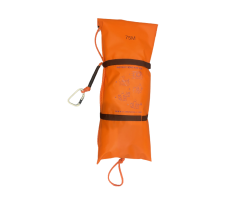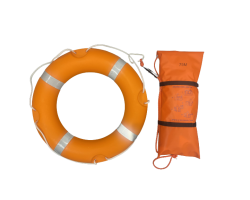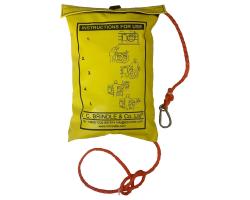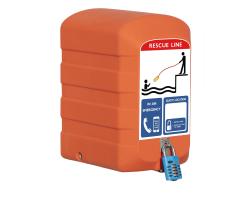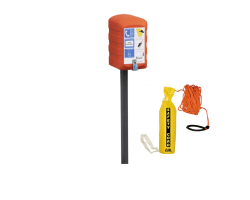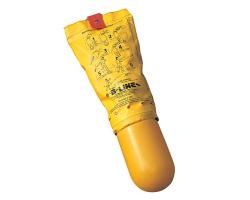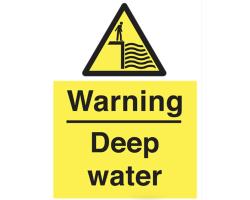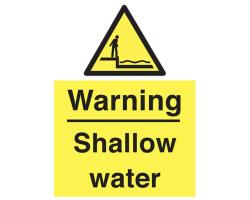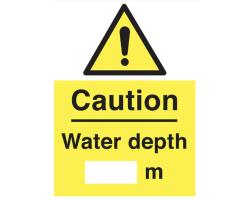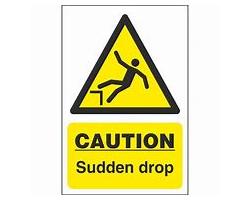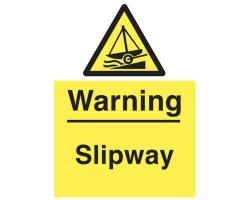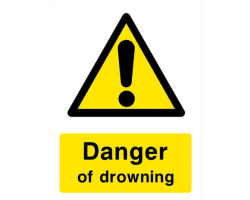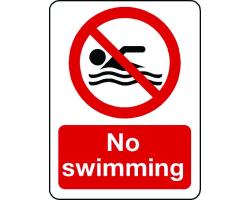Enhancing Safety: Periodic Inspection Routine for your Lifebuoy Housing & Rescue Line
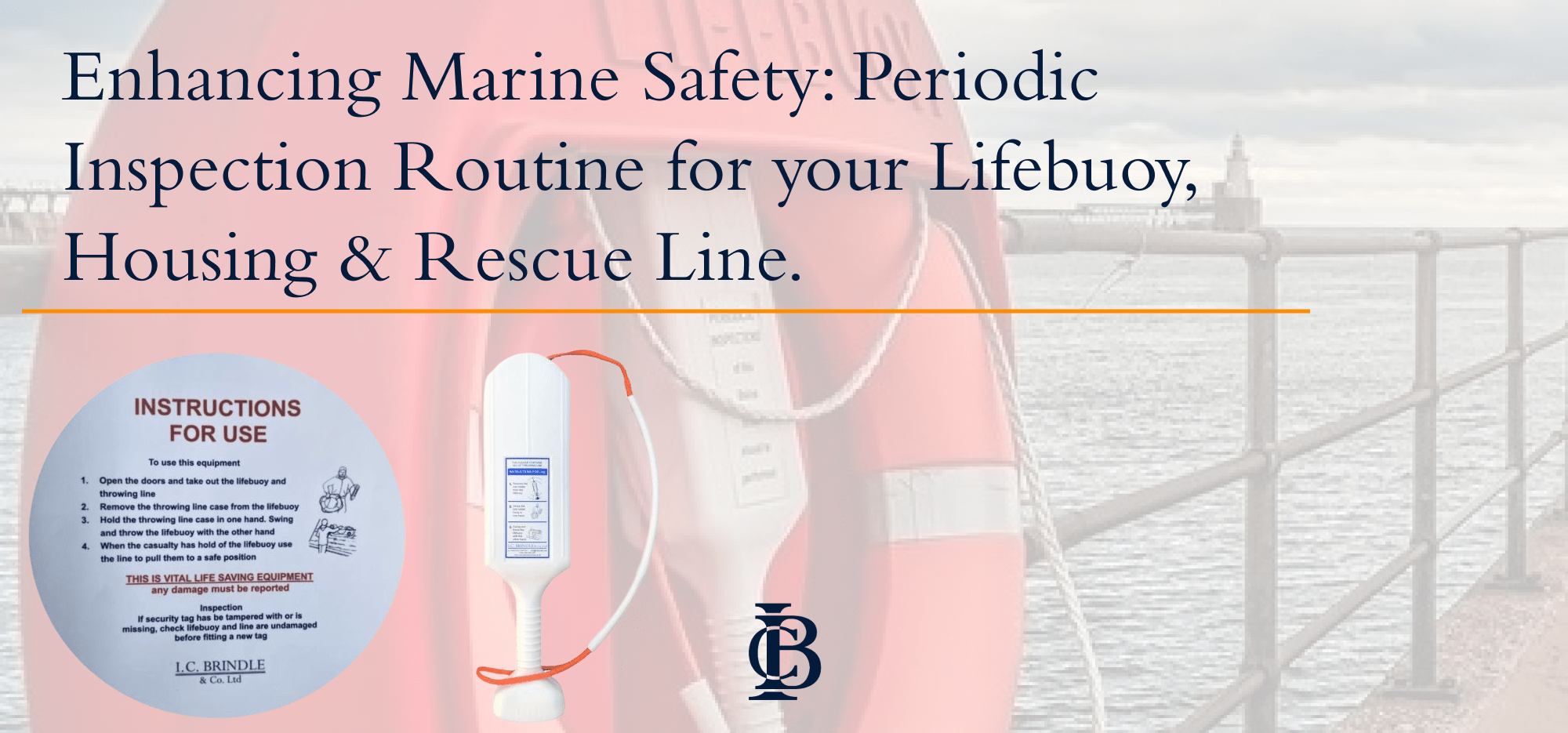
Lifebuoy Equipment Inspection: Overview
Whether it's ensuring safety, protecting against environmental factors, or deterring theft, regular inspections are essential. The frequency of inspections is determined by the responsible body, taking into account legislation, location, and vulnerability. Monitoring the inspection results over time helps gauge the effectiveness of the inspection schedule. Additionally, seasonal variations might influence the frequency of inspections.
Crucially, equipment that has been used for practice, rescue, or malicious purposes requires immediate inspection. Join us as we explore the significance of accurate record-keeping and delve deeper into the world of equipment inspection.
Maintaining a clean and orderly appearance for all items and ensuring clear and understandable signage is crucial. This attention to presentation not only fosters a sense of pride and confidence but also plays a significant role in preventing neglect, vandalism, and theft. In our latest article, we explore the importance of creating an aesthetically pleasing environment and its impact on overall safety and security.
Lifebuoy Inspection Routine:

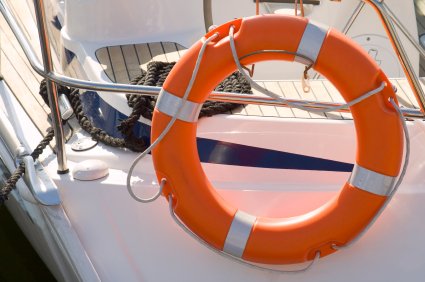
When conducting a lifebuoy inspection, it is essential to ensure that the following steps are taken into consideration:
Accessibility and Secure Mounting: Is your lifebuoy securely mounted yet easily accessible and removable when needed? Ensuring the accessibility, secure mounting, and proper maintenance of lifebuoys are essential for preserving public safety and potentially saving lives in emergency situations. A securely mounted yet easily accessible lifebuoy enables swift retrieval during critical moments, eliminating delays and increasing the chances of successful rescue operations.
Visual Inspection: Conduct a thorough visual inspection to check for any signs of damage or deterioration, which could compromise the lifebuoy's functionality. Conducting regular visual inspections is crucial to detect any damage or deterioration early on, ensuring that the lifebuoy remains in optimal working condition and minimizing the risk of failure when it is most needed through regular visual inspections.
Water Ingress Prevention: Is your lifebuoy filled with the polyethylene and sealed with a 'plug,'. If so, ensure that the plug is intact and there has been no water ingress since it's installation. This can be verified by comparing the actual weight of the polyethylene lifebuoys with their designed weight. Preventing water ingress in filled polyethylene lifebuoys is vital to maintain their buoyancy and effectiveness. By verifying the integrity of the plug and comparing the actual weight to the designed weight, one can ensure that the lifebuoy has not been compromised by water infiltration, safeguarding its ability to support individuals in distress
Retro-Reflective Tape: If your lifebuoy is fitted with SOLAS retro-reflective tape, make sure it is clean and securely attached. Replace any tape that is scuffed, defaced, or becoming detached to maintain optimal visibility. The presence of clean and securely attached retro-reflective tape enhances the lifebuoy's visibility, especially in low-light conditions, aiding rescuers in locating and assisting those in need. Regular inspection and replacement of damaged or detached tape sustain its reflective properties and maximise its effectiveness.
Grabline Integrity: Check the lifebuoy grablines that runs around the circumference of the lifebuoy for any signs of damage, fraying, or solar degradation. Additionally, ensure that it is securely attached at four equidistant points. If the grabline terminates in a knot, ensure that it is secure to prevent detachment. The integrity of the grabline is also critical, as it serves as a lifeline for individuals in the water. Checking for damage, fraying, or solar degradation ensures its strength and reliability. Secure attachment at equidistant points and proper knot security prevent the grabline from detaching, enabling swift and secure retrieval during rescue operations.
Why are these Inspections important? By prioritising these inspection points, individuals responsible for safety and maintenance can ensure that lifebuoys are fully functional, reliable, and capable of saving lives. These measures enhance public safety near water bodies, reduce the risks of accidents, and provide reassurance to both the general public and regulatory authorities overseeing inspections.
Guidelines for Lifebuoy Housings:

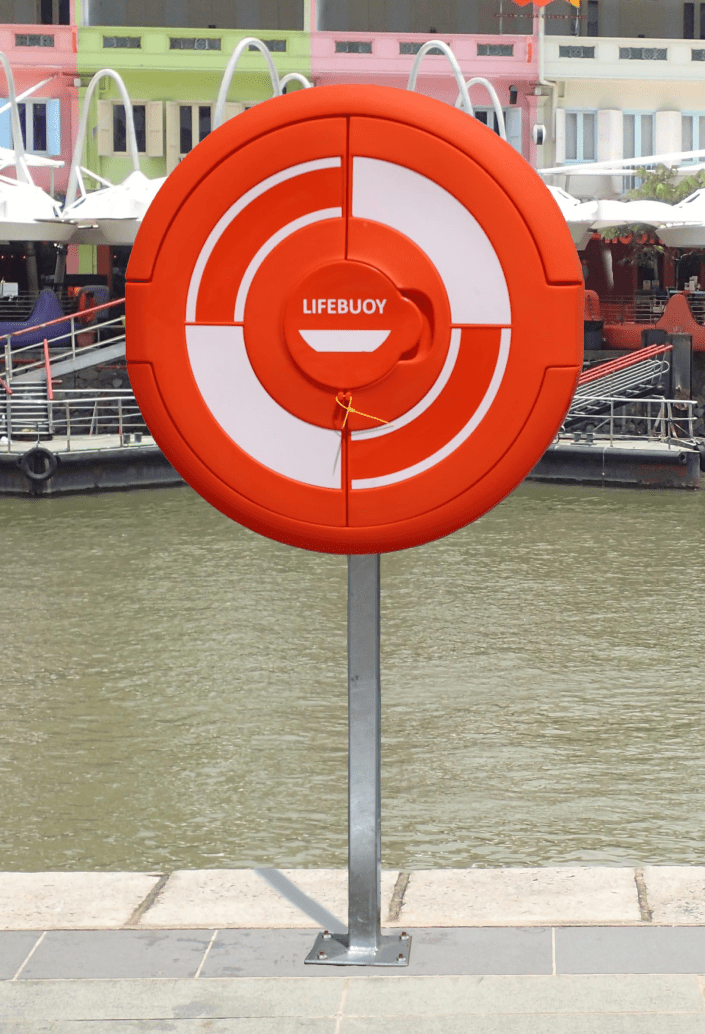
When inspecting your lifebuoy housing, it is crucial you make sure these steps are taking during inspection:
Secure Attachment and Structural Stability: Is your Lifebuoy Housing secure and stable? Prioritise the secure attachment of lifebuoy housings to their supporting structures, such as poles, posts, walls, or rails. Additionally, ensure that the supporting structure is adequate and stable. Check for any cracks or damage in protective coatings, such as galvanised or plasticised finishes - which could be evident in lifebuoy mounting options such as, hard-surface poles, and sub-surface poles, and GRP poles. A properly secured housing ensures that the lifebuoy inside remains in its designated location, readily accessible in case of an emergency. It also eliminates the risk of the Lifebuoy Housing becoming dislodged or displaced, which could lead to delays in retrieving the life-saving device when it is urgently needed. A secure attachment provides peace of mind and promotes a swift response during critical situations.
Visual Assessment for Damage and Deterioration: Is your Lifebuoy Housing ahowing signs of damage or deterioration? Conduct a thorough inspection of the housing for visible defects that could inhibit the lifebuoy housing's function. These issues can compromise the integrity and performance of the housing, potentially impacting the effectiveness of the life-saving equipment stored inside. Timely identification and addressing of any damage or deterioration ensure the housing remains in optimal condition, ready for immediate use when needed. Regular inspections contribute to the longevity and reliability of the lifebuoy system.
Examination of Door Hinges and Connections: Are the door hinges and connections of your Lifebuoy Housing functioning correctly? Ensure proper functioning and secure attachment of door hinges and other connections within the housing to prevent malfunctions or accidents. Verify smooth operation to maintain the housing's reliability and safety. Smooth operation and secure attachment of the door hinges and connections within the lifebuoy housing are vital for safety and functionality. In emergency situations, easy and timely access to the lifebuoy is critical, and any delays caused by malfunctioning components can put lives at risk. Additionally, proper functioning of the door hinges and connections prevents accidents and injuries during operation. It also ensures protection against environmental factors such as harsh marine conditions, maintaining the integrity of the life-saving equipment! Regular inspection and maintenance of these components guarantee reliable performance and contribute to the overall effectiveness of the lifebuoy system.
Functional Door and Closure Mechanism: Does your Lifebuoy Housing Door open and close properly? A properly functioning door or closure mechanism in the lifebuoy housing ensures quick and easy access during emergencies, enhancing response time and potentially saving lives. It provides reliable storage and protection for the life-saving equipment, maintaining its readiness. By preventing accidents and injuries, a well-maintained mechanism promotes a safer environment for users and responders. Regular maintenance contributes to the housing's durability and longevity, reducing the need for frequent repairs or replacements.
Anti-Tamper Indicator Verification: Has your Lifebuoy Housing been tampered with? Did someone try to break in? As a concluding step in the inspection process, ensure the presence and integrity of the anti-tamper indicator. Confirm that it remains intact and positioned as intended, providing an extra layer of security to deter unauthorized access or tampering. The presence and integrity of an anti-tamper indicator in the lifebuoy housing are vital for preventing unauthorized access, protecting against interference, and promoting accountability. It acts as a visual deterrent, safeguarding the life-saving equipment and ensuring its availability during emergencies. Verifying the indicator's presence and condition helps maintain the housing's integrity, reliability, and overall effectiveness, enhancing the safety and security of the equipment.
Lifebuoy Rescue Lines
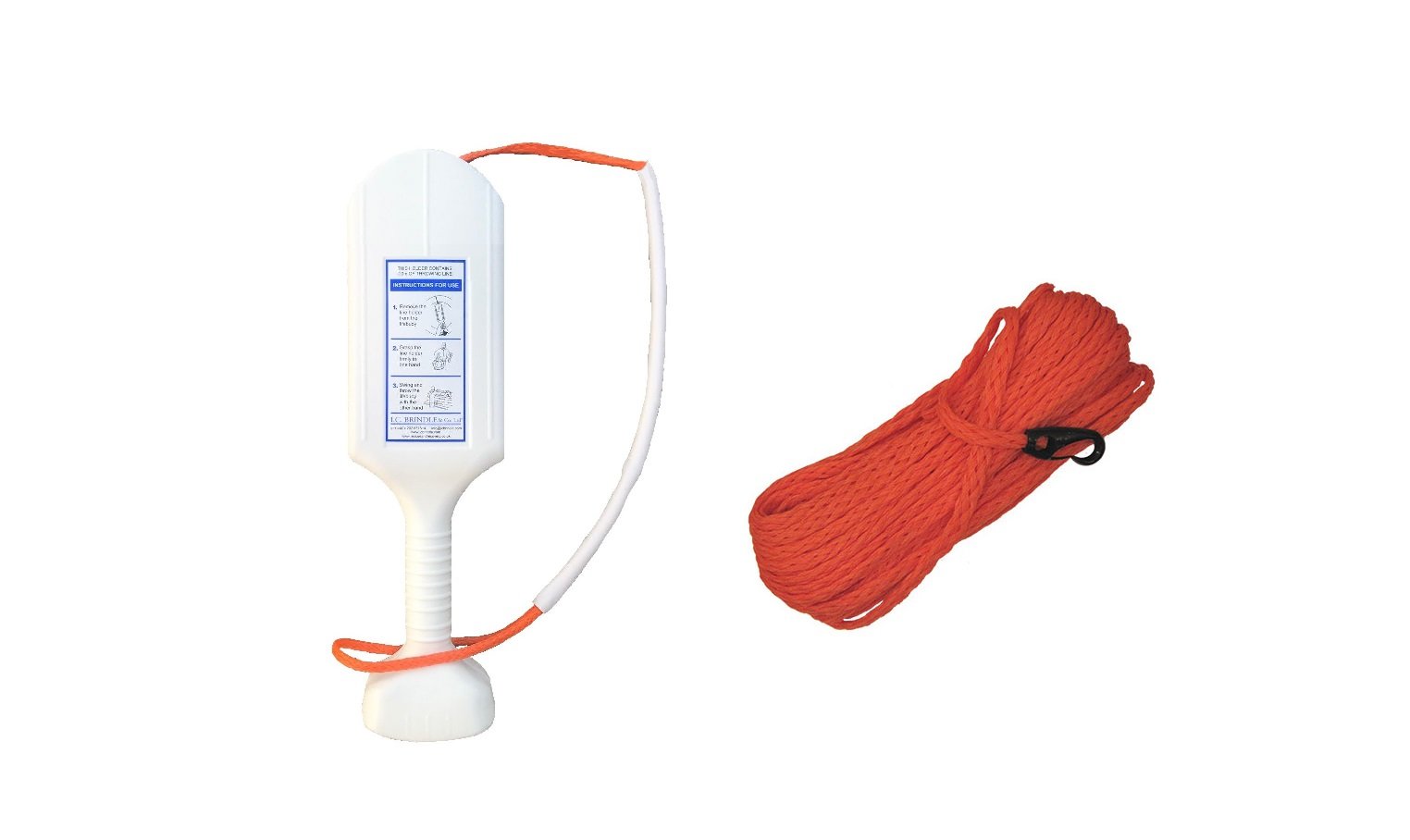
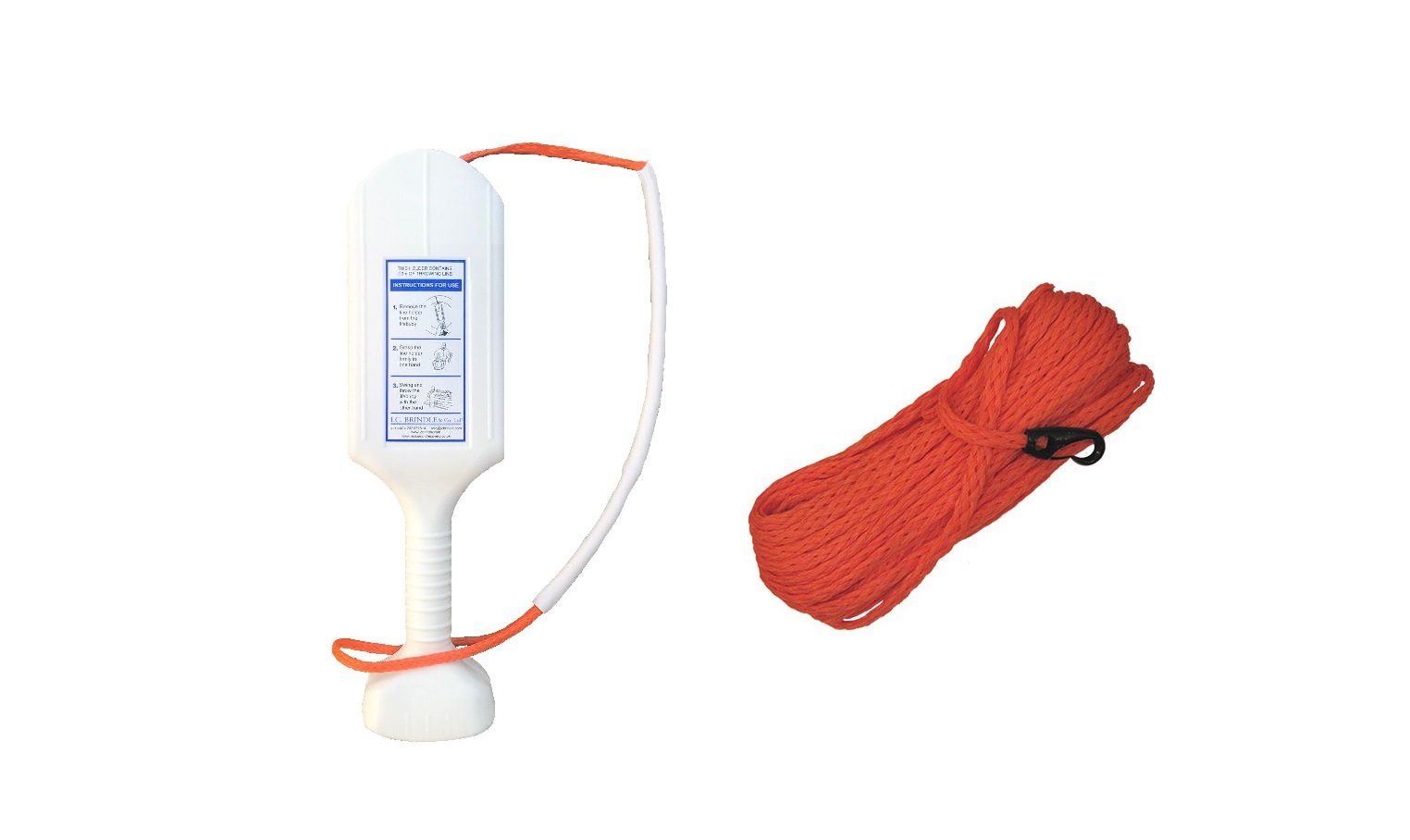
When performing a lifebuoy inspection on the rescue lines, it is imperative to ensure that the following steps are followed:
Loose Lines: Proper maintenance of the lifebuoy lines is crucial for their effectiveness and reliability. Begin by securely attaching the line to the lifebuoy, ensuring it remains securely connected during use. Conduct a visual inspection to identify any damage, such as cuts, fraying, or deterioration caused by incorrect stowage or exposure to environmental factors. Neatly stow the line to prevent tangling and ensure easy deployment when required. If the line is exposed, it is advisable to replace it every three years to maintain its strength and functionality. These measures ensure that the lines are in optimal condition, ready to assist in rescue situations and enhance overall safety. Proper maintenance of lifebuoy lines is crucial for their effectiveness and reliability during water rescue operations. Regular inspections and repairs help identify and address any damage or deterioration caused by environmental factors or incorrect stowage. Neatly stowing the lines prevents tangling and ensures easy deployment when needed, enhancing overall safety and rescue readiness.
Encapsulated Lines: When examining your lifebuoy encapsulated lines, prioritise these steps to ensure its optimal condition and functionality. First, confirm that the line is securely attached to the lifebuoy. Next, inspect the line container for any damage and ensure that the foam pad at the top is properly positioned within the retaining rim. Additionally, ensure that the instruction label remains legible and is not defaced. Conduct a visual inspection of any exposed line, and don't forget to check for any signs of damage. Lastly, it is recommended to replace the line at intervals not exceeding five years. Secure the line to the lifebuoy, inspecting the container and foam pad, maintaining legible instcraftruction labels, and regularly checking exposed lines are crucial for the integrity and functionality of encapsulated lines. Timely replacement of the line ensures reliability, ensuring the effectiveness and safety of lifebuoys during rescue operations - which is key for preventing incident, and saving lives.
If you follow these steps, maintaining the effectiveness and reliability of the lifebuoy will be alot more straightforward!
Lifebuoy Lights

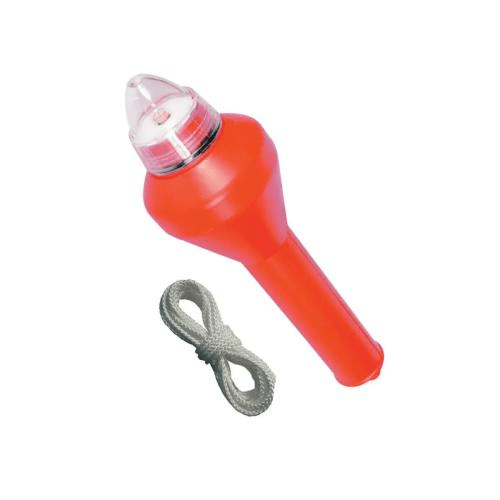
When conducting a lifebuoy inspection on the lights, it is crucial to ensure that these steps are taken into account:
Lights: Regular inspection, testing, and maintenance of lights attached to lifebuoys are crucial to enhance visibility and ensure quick locating during emergencies. Adhering to the manufacturer's instructions helps identify and address any issues promptly - as they will know the equipment best. Doing so, will help prevent unexpected failures and promote reliability. It also ensures compliance with safety standards and regulations, instilling confidence in the lifebuoy lights' effectiveness for users.
By prioritising these practices, the overall safety and success of rescue operations are significantly increased!
Lifebuoy Instructions & Signage


When inspecting lifebuoy instructions and signs, it is essential to make sure that the following steps are followed during the inspection:
Instructions, signs, and warning notices: This visual information hould adhere to recognised forms and standards, where applicable. They should be presented in appropriate language(s), which are easily comprehensible, and provide accurate information of the life-savign equipment. Signs requiring repair and displaying poor legibility or image clarity should be replaced as quickly as possible, while all others should be subject to scheduled replacement. In illuminated areas, placement should ensure clear visibility during nighttime hours.
Ensuring instructions, signs, and warning notices conform to recognised forms and standards is crucial for clear communication. But why is this important? Using appropriate language(s) and replacing damaged or unclear signs helps eliminate misunderstandings and potential accidents. Proper placement in illuminated areas ensures visibility during nighttime hours, promoting safety. By adhering to these practices, effective communication, safety, and adherence to correct information are prioritised.
Inspection & Recording
During the inspection and recording process, it is vital to ensure that the following steps are diligently carried out:
Each inspection should be accompanied by a comprehensive maintenance report that includes essential details: These details consist of the inspection date, the name of the inspector, the equipment's location, inspection frequency, equipment type, and its condition. The report should also highlight any necessary remedial actions, further actions required, and provide recommendations related to the equipment or inspection procedures. By documenting these key elements, the maintenance report ensures accurate record-keeping and facilitates effective follow-up and maintenance planning.
For example, a maintenance report should be completed with every inspection and should look like this:
- Date of inspection
- Name of person conducting the inspection
- Location of the equipment
- Inspection frequency
- Type of equipment
- Condition of equipment
- Remedial action required
- Further action required
- Any recommendations in relation to the equipment or inspection procedure
Maintaining comprehensive maintenance reports is crucial as they provide a record of inspection activities, promote accountability, and enable effective planning: By documenting the inspection date, personnel involved, equipment location, frequency, type, and condition, as well as remedial actions, further actions required, and recommendations, these reports ensure transparency, facilitate timely repairs, and support continuous improvement. Proper record-keeping enhances equipment reliability, safety, and longevity, and optimises maintenance procedures for efficient use. Which in turn, provides peace of mind for teams / staff using the lifebuoy rescue equipment.
Usage & Drill Records
During the usage and drill recording process, it is crucial to diligently follow the following steps:
When a lifebuoy is utilised in a rescue scenario, it is crucial to document any incidents or accidents that occur: Incident and accident reports should be completed and filed, along with records of instruction and practice. These records provide valuable information for improving instructions and procedures based on real-life usage. Prioritizing accurate documentation enhances safety protocols and ensures compliance, contributing to effective rescue operations.
When it comes to life-saving equipment, such as lifebuoys, lifebuoy housings, and life ropes, proper documentation plays a vital role. By prioritising accurate reporting and record-keeping, including incident reports, instruction records, and practice logs, you can enhance safety protocols and ensure compliance.
Visit icbrindle.com for more information on lifebuoys equipment.
Guidelines for Lifebuoy and Rescue Line Usage
Now that you have gone through and checked off the proper steps for the periodic routine of your lifebuoy, housing, and rescue line, here is a visual, step-by-step instructional guide on how to use your lifebuoy — from removal of the encapsulated line from the lifebuoy, technqiue for holding the lifebuoy and line, to deployment of lifebuoy during a rescue operation!
Instructions for the use of the Lifebuoy and & Rescue Line:
- As provided with lifebuoy housings type TS4, TS7, SOS4, and SOS7
- Remove the housing cover (if fitted) by lifting upwards and pulling out
- Remove the lifebuoy and the encapsulated line suspended in its internal diameter, by lifting it over the retaining horns
- Remove the line holder from the lifebuoy Grasp the neck of the line holder
firmly in one hand
With the other hand swing and throw the lifebuoy towards the casualty - When the casualty has hold of the lifebuoy retrieve them by hauling in the line
- For a 22”/24” lifebuoy the holder normally contains 20m of buoyant line
- For a 30” lifebuoy the holder normally contains 30m of buoyant line
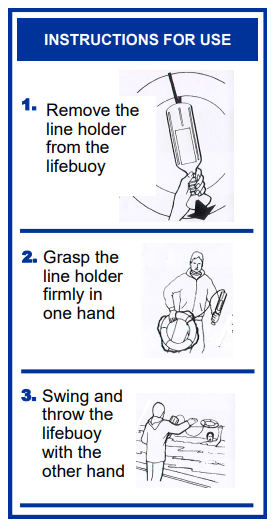

Conclusion:
In conclusion, ensuring regular inspection and maintenance of lifebuoys, lifebuoy housings, and rescue lines is essential for public safety and effective emergency response. By following these proper inspection steps, maintaining records, and utilizing visual instructional guides, you can enhance the reliability and functionality of your life-saving equipment! Not only does prioritising these practices create a safer environment and reduce risks, but it also instills confidence in both the public and regulatory authorities. Together, we can prioritise safety and work towards a more secure future that upholds a culture of marine and land-based safety around the world!
For more comprehensive resources and information on lifebuoys, lifebuoy housings, and rescue lines, visit our website. Or book a discovery call with one of our experts!






